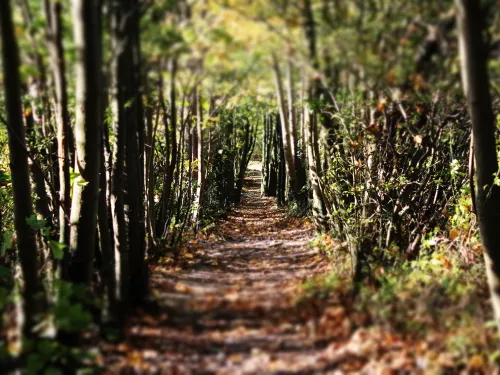
How to save a woodland
When your woodlands are under threat, what can you do to save them?
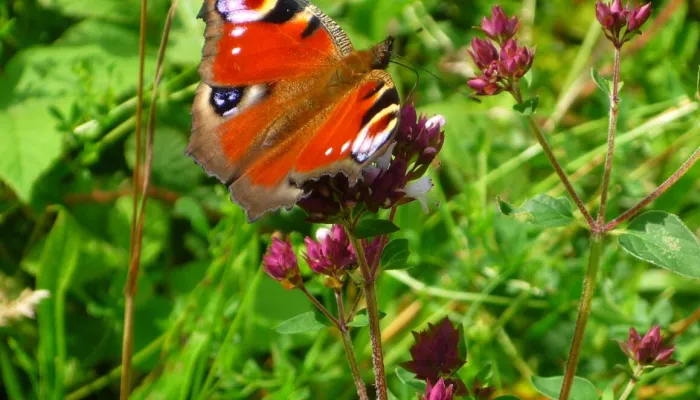
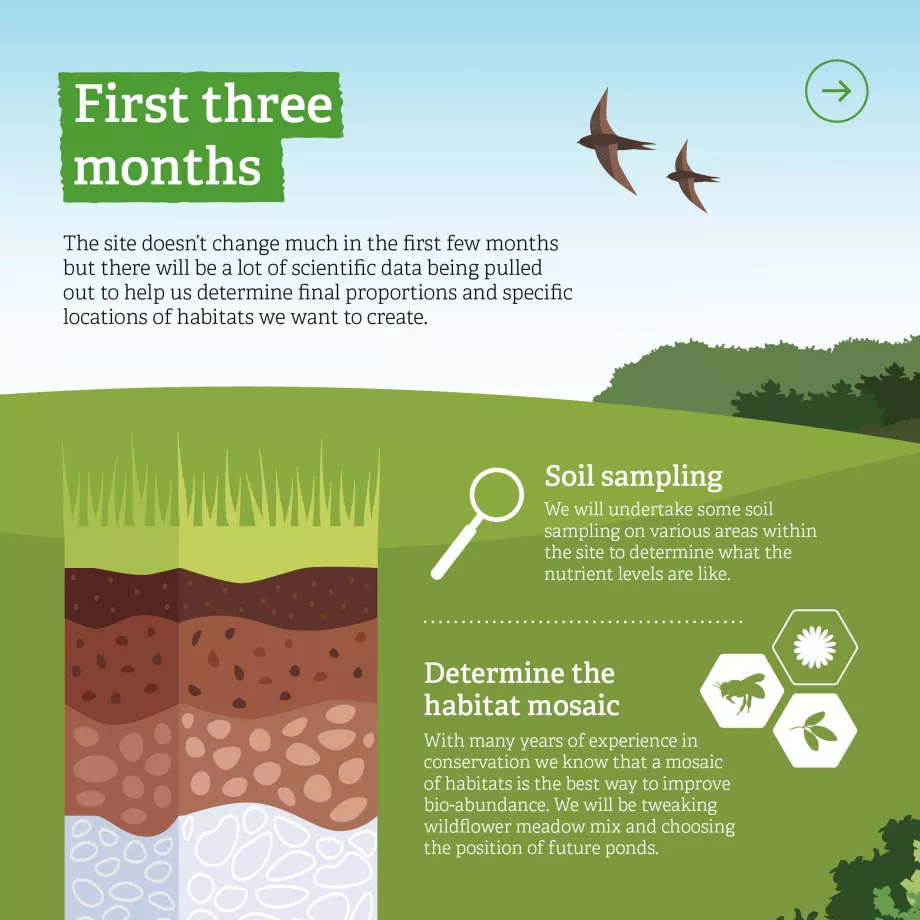
Katy McCarten
The first year is all about establishing the site and getting it sowing the metaphorical (and sometimes literal) seeds that will set the site up for continued growth. We would begin planting hedgerows, secondary woodland and scrub. Fencing will need to be erected and infrastructure such as water set-up to house the grazing animals. Depending on the soil composition analysed in the first few months, suitable wildflower mixes will be purchased and sown.
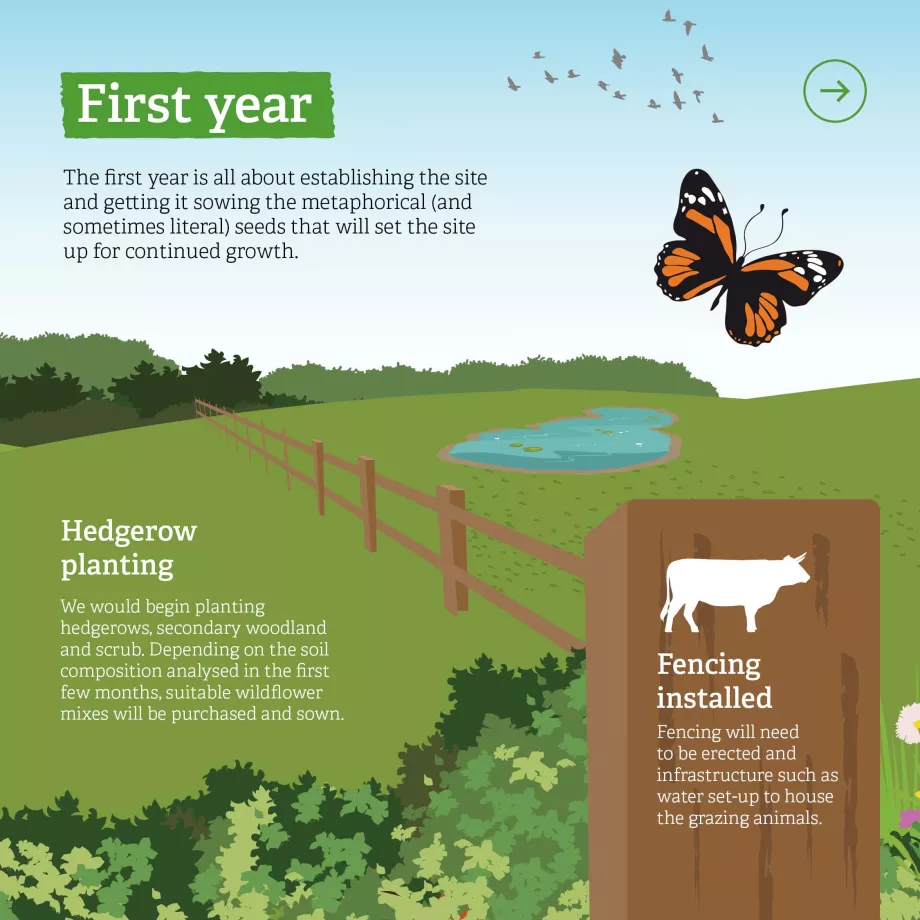
Katy McCarten
At the end of the first year or the beginning of the second year, any grazing animals would arrive on site and require daily welfare checks from our conservation grazing team and volunteers.
Ultimately, the first five years will start to see the beginnings of this relaxed approach to management where people will take a back seat (except for ensuring animal welfare), and nature will take the helm. Wildflowers will begin to establish, as will the hedgerows, scrub and woodlands. Nearby wildlife will start to visit the place more frequently and in greater numbers.
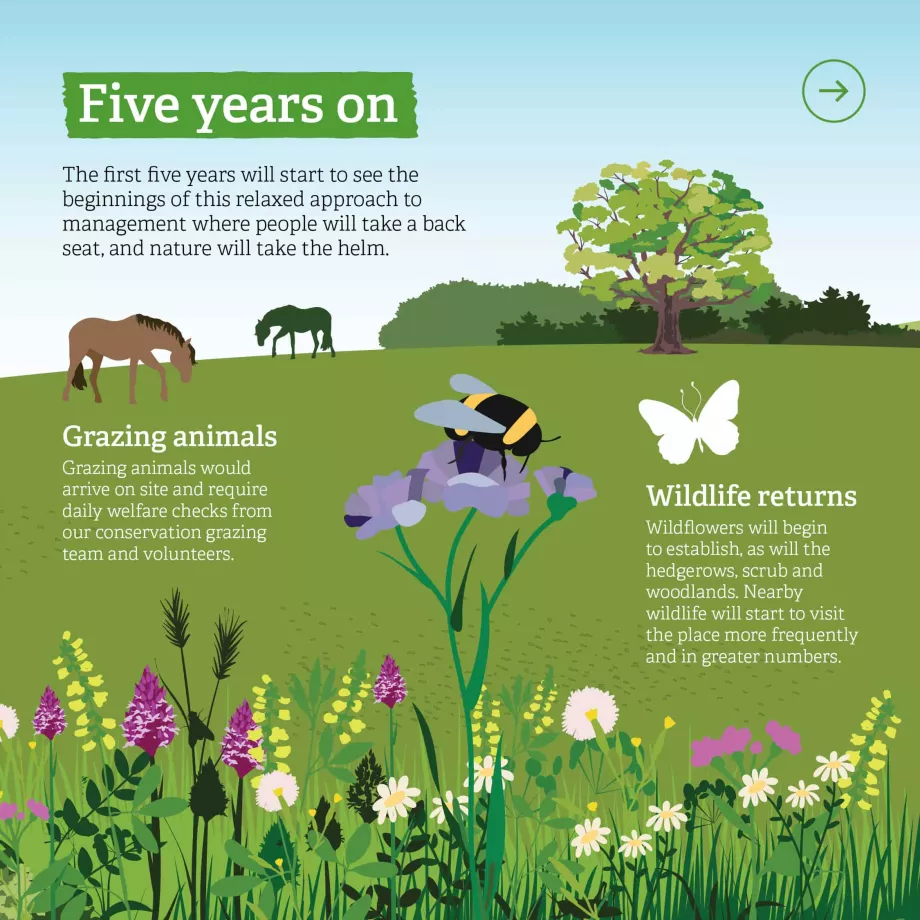
Katy McCarten
In the next 10-15 years, the site will truly begin to develop and mature. We’ll begin to see a much more established habitat used by lots of wildlife and without much physical intervention from humans. Of course, it would be difficult to predict what species will be there as we let nature take its own course though we expect an increase in chalk downland butterflies, birds (such as turtle doves), reptiles and pond-based creatures such as, amphibians and dragonflies too. Our evidence and monitoring team will continue to keep an eye on the site with management surveys which are a system of surveys we use across key reserves to ensure that the plans for the site are on track and if they’re not, what needs to change in the management plan to adapt and continue to improve biodiversity.
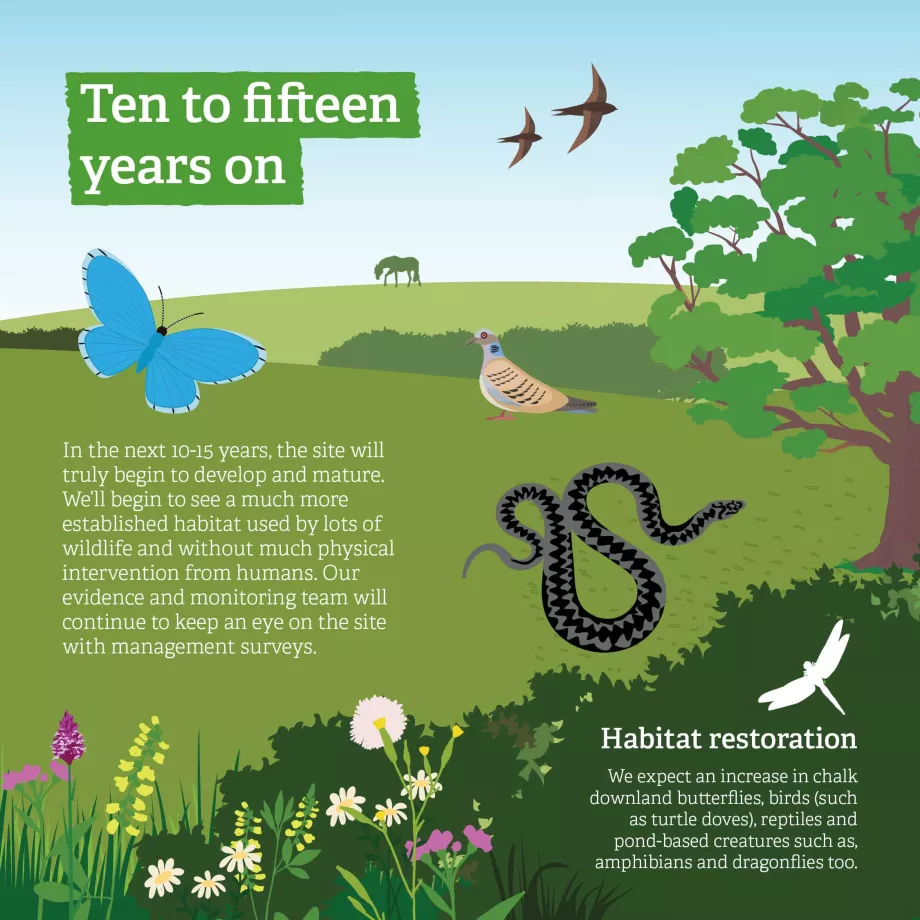
The good news is, similar methods have already worked on Polhill Bank, just across the road from the extension land. This three-acre site is a haven to wildlife and started off much like this site, as arable land – you can find out more about its transformation here.

When your woodlands are under threat, what can you do to save them?
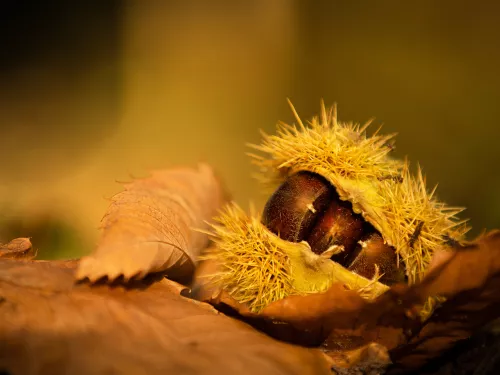
In this blog we take a closer look at how your donations will help to protect and restore woodland habitat across Kent.
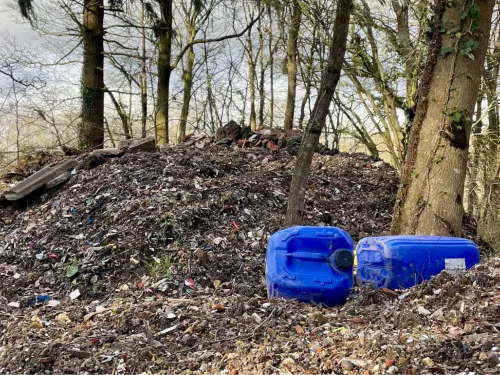
Senior Press and Advocacy Officer Sally Smith shines a spotlight on some of the woodlands at risk in the county and what Kent Wildlife Trust is doing about it.